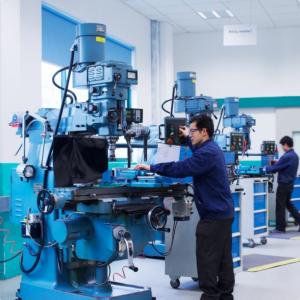Table of contents
What Is CE Certification?
CE certification is the process that enables manufacturers to legally place a machine on the European Union market, confirming compliance with the Machinery Directive 2006/42/EC and Regulation 2023/1230. It includes risk assessment, preparation of technical documentation, conformity assessment, and issuance of the EU Declaration of Conformity. The CE marking affirms that the machine can be lawfully operated within the EU.
Legal Basis and Importance of CE Marking
The CE mark signifies that the machinery complies with EU legislation. The legal framework includes:
- Directive 2006/42/EC and Regulation 2023/1230
- Decision 768/2008/EC on the marketing of products
- Regulation 765/2008/EC on market surveillance and accreditation
The “Blue Guide” provides further guidance on the interpretation and application of these rules.
CE Certification Process for Machinery
- Application: The manufacturer submits an electronic request and provides machine data.
- Design review: Assessment of machine construction for compliance with essential safety requirements.
- Documentation preparation:
- Technical documentation: drawings, schematics, specifications, user manuals, risk assessment.
- Installation and operation instructions.
- Conformity assessment: Risk analysis, functional testing, inspections, and testing reports.
- EU Declaration of Conformity: A document confirming full compliance with legal requirements.
- CE marking: Affixing a permanent, legible CE label with the manufacturer’s details.
Documentation Required for CE Certification
- Description of the machine and its intended use
- Mechanical and electrical diagrams
- Technical specification and risk analysis
- List of harmonized standards
- Test reports and results
- User manual compliant with applicable legislation
- EU Declaration of Conformity
Documentation must be retained for a minimum of 10 years and be available to market surveillance authorities.
Certification Challenges
- Lack of knowledge about applicable standards
- Incomplete documentation
- Overlooking key hazards
- Failure to account for Annex IV machinery
- Uncertainty regarding notified body involvement
False CE marking may lead to fines, civil and criminal liability, and a ban on market entry.
Role of the Notified Body
- Review of documentation and conformity assessment
- Testing and inspection
- Issuance of a certificate of conformity
- Production monitoring and documentation updates
For high-risk machinery (Annex IV), the involvement of a notified body may be mandatory.




























